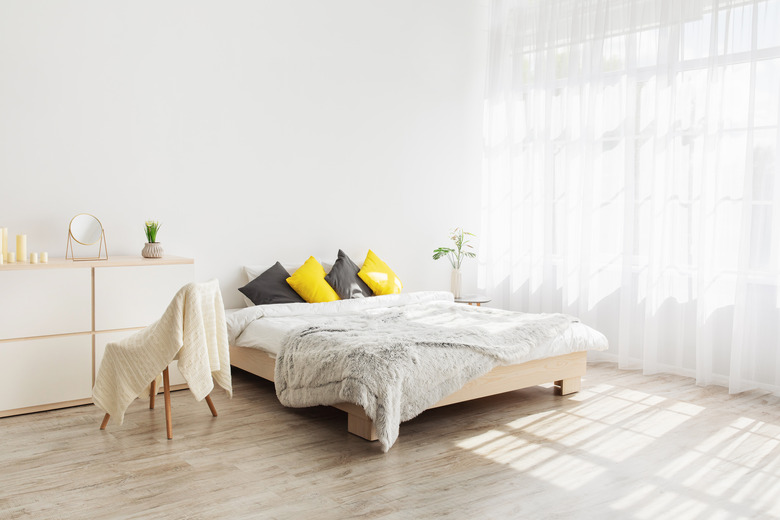How Many Curtains Should Be Hung On A Double Window?
We may receive a commission on purchases made from links.
Choosing curtains or draperies can be a hard choice for any homeowner. After all, the style of window treatment can change the look of an entire room. Double windows are even harder to choose curtains for because they are larger than traditional windows. However, when a few specific principles are applied, it is easy to choose the right number of curtain panels to use in any room.
Tip
Draperies should be 2 1/2 to 3 times the width of the window. With double windows, plan on using at least two panels per window or four panels for a double-width picture window.
Choosing a Curtain Style
Choosing a Curtain Style
The number of curtains that you place on a double window is largely determined by your personal taste. Traditional rules of drapery are much less used than in the past and so it is possible to have any number of combinations for hanging curtains. The more curtains in the room, the more formal the room will look. A light, breezy curtain will add beauty and texture to a room.
The kind of look and feel that you want for the room is the largest determining factor in how many panels you use. The traditional width for curtains on any size window is 2 1/2 times the width of the window. If two panels are not large enough to cover this width then you should go with four panels so there is an equal number of panels on each side of the window.
Measuring the Window
Measuring the Window
Measure the length and width of the window. The length of the window helps determine the length of any curtains that you get. Most curtains are placed at the window sill, just below the window sill, or grazing the floor. You can go longer, but this creates tripping hazards that can cause the curtains to fall.
Curtains also get dirtier when they touch the floor. If you are going with the traditional curtain coverage, multiply the width of the window by 2.5 to ensure sufficient coverage without looking skimpy.
Determining the Numbers
Determining the Numbers
Go to the curtain section of a home supply store or a custom drapery store. If you go to a custom store, expect to pay a lot more for your draperies. However, ordering custom draperies can resolve problematic window or design issues, such as curved-top windows or specialty fabrics.
Look at the average-sized panels. Compare these measurements to the measurements that you took from the double window. Decide if you want to cover the entire window or just half, adding a set of sheer curtains behind the drapes to allow light through while obscuring the view from outside. In general, sheers should be 3 times the width of the window.
Some people do three sections of curtains on double windows — one on each side and one in the middle. For this look, you will need three to six panels. In most cases, you will need four panels for a double window. If you want to go for a flat or wispy look, then you can get by with two panels as long as they are wide enough to cover the entire window.
Selecting the Curtain Rod
Selecting the Curtain Rod
Once you've found the perfect curtains for your windows, you'll need curtain rods. These can range from a simple straight metal curtain rod to a 1- to 1 1/2-inch-diameter wood dowel, stained or painted, and adorned with a finial at each end. This would serve for curtains with grommet tops or rod pockets.
Tension rods fit inside the window frame, allowing you to add sheers or cafe curtains. These are easily removed if you change the window treatment or when moving to a new home.
Pinch-pleated curtains often use drapery hooks to attach to a traverse rod, which allows you to "draw" the curtains open or closed. Traverse rods can pull the curtains to each side of the window in a "split draw" or one way to the right or left. Often used in formal window treatments, the brackets for these rods should be attached to the studs inside the wall, as the drapes are often heavy fabrics that block out the sun as well as drafts, especially in vintage homes.
